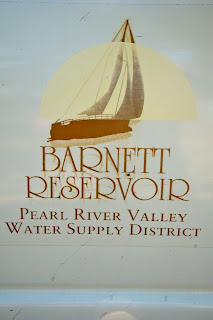Morning at Rocky Springs Campground, Mississippi
This was the largest campsite we had ever had. It was a palatial piece of woods. Though it would have been nice to stay longer in the quiet, serene, reverent environment we were eager to continue our adventures on the Natchez Trace Parkway.
Mile Post 73
A Stand was a home that offered overnight accommodations for travelers on the trace. Sometimes the offering was a place to bunk down on the covered but open porch and corn mush.
All that remains here is the family cemetery.
A part of the original trace.
Here we met up with Sid Mar'tinez who had been in the Natchez Trace State Park one of the nights we were there. He is a cross country solo bicyclist, carrying all that he needs, including his tent, on his bike. He lives in Covington, LA, though he doesn't know when he'll get home.
Flat Stanley enjoyed meeting Sid and began to think about taking long bicycle rides when we get home. He promised to always bike with a friend or family member and to always wear his helmet.
Milepost 88.1
Cowles Mead Cemetery
Fresh flowers had very recently
been hung on Cowles' fence.
In memory of
Cowles Mead
whose
pure life
exemplified the Spirit
of an
Honest man
1776-1844
Milepost 101
Mississippi Craft Center
Milepost 105.6
Ross Barnett Reservoir on the Pearl River parallels the parkway for eight miles.
Here's ¼ of the Methodist group with 70 miles to go today!
One young woman, now in Indiana for college, is from Canton, OH, and knew the area where the UCC Church where Bill was pastor was located.
Milepost 114.4
When Eric of the Model T heard we were going to stay with no electricity again, he suggested we take the bridge across the reservoir for telephone service and WiFi. A no-brainer. It felt like old home week when the Model T arrived, and then the two cyclists. They were all bedded down early! Sid also biked in for the night and told us how glad he felt to see we were there, also. Bill helped Sid with some GPS information.


















































